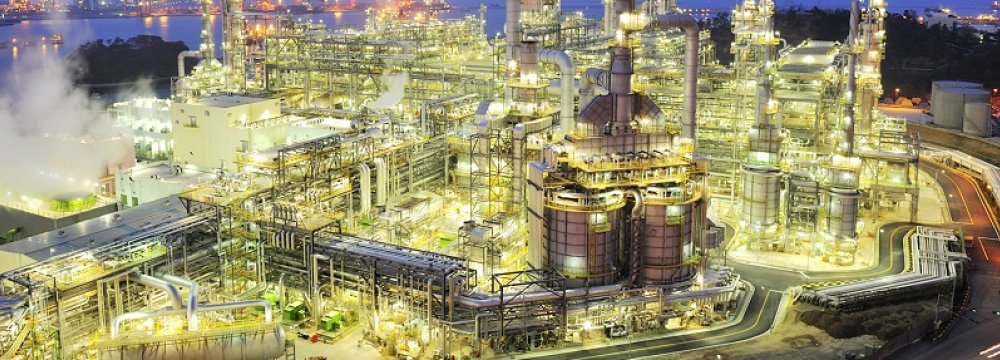People in the West perceive that money in Middle Eastern (Arab) oil countries grows on trees. Or, to be precise, it's pumped out of the ground. Case in point: Saudi Arabia.
In 2008, the country had a fiscal surplus of 29.8%, which means the government raised $1.30 for every $1 it spent. The kingdom also had stable unemployment for decades, massive trade surpluses and government debt to GDP of 1.4% at the end of 2014. Things could not have been better—so they had to get worse, Seeking Alpha reported.
In 2016, Saudi Arabia is expected to rack up a fiscal deficit of $84 billion plus or more than 13% of GDP. It recently had to bail out its banking system with $5.3 billion and the country's biggest bank (National Commercial) is trading near all-time lows, down 30% this year.
The biggest reason for the stress in the Saudi economy is the decline in oil prices, robbing the kingdom of its only source of revenue both for funding fiscal expenditures and purchases of foreign goods and services.
Oil in the form of West Texas Intermediate is down from a 2013 high of $110 to $50, too low to fund the kingdom's lavish subsidies and transfer payments, and its strategy to diversify its economy away from oil is far behind schedule.
Draining Reserves
Because fewer dollars are flowing into the country from oil sales, Saudi Arabia is now paying more for imported goods and services than it receives from oil sales. As a result, its current account deficit reached $28 billion in the first half of the year, down from $40 billion quarterly surpluses for most of the past decade.
Because hard currency is used to fund trade, the Saudi Arabian riyal, pegged to the dollar at a stable rate of 3.75 riyals, is under pressure as speculators bet the long-term fix to the dollar may break in a surprise move.
"The strong dollar and low price of oil is strangling the Saudi economy and causing a drain on Saudi reserves," Jim Rickards, author of the 2012 book "Currency Wars," told Agora Financial.
"Their budgets are in deficit, and they are drawing down foreign exchange reserves to make up the difference," he told Agora last year.
Indeed, the Saudis, big buyers of US debt in the past, have reduced their treasury portfolio from a record $123.7 billion in January this year to $93 billion in August. Similar to China, the proceeds are used to defend the currency and the peg to the US dollar.
Rickards has been talking about a devaluation of the riyal since early 2015 and maintains his view that the Saudis won't be able to maintain the peg. "Currency pegs are there to be broken," he told Epoch Times.
Debt Binge
So the Saudis are drawing on their war chest of US Treasuries accumulated during the oil boom years, but that's not all. The kingdom recently sold $17.5 billion of foreign currency denominated bonds in the largest-ever debt placement by an emerging economy.
"Oil countries are increasingly turning to debt markets (domestic and foreign) to finance their rising deficits," notes the Institute of International Finance in a report and states that total debt to GDP in Saudi Arabia has risen by more than 20 percentage points in a one-year period since the first quarter of 2015.
In consequence, insurance contracts on Saudi debt, once considered among the safest in the world, are now signaling that the country has a higher default probability than Mexico or Brazil.
Joining the government in this debt issuance exercise are private non-financial corporations, whose debt to GDP increased by 12 percentage points over the same period, and households, which added 1.8 percentage points to their debt load—the highest rate of any country.
Withdrawals
As a last resort, the royal family is considering selling part of the crown jewels, the national oil company Aramco, valued at $2 trillion.
While most analysts pinpoint Saudi Arabia's problems on the low oil price, Jeffrey Snider of Alhambra Investment Partners sees them as part of a global dollar shortage, which is also affecting other emerging economies.
"The kingdom's problem is withdrawal, as in dollars not riyals. … In the mainstream, Saudi Arabia's problems are pitched as oil prices, and thus quite understandable as being their own," he wrote in a Sept. 26 blog post.
"However, every financial problem around the world can be easily distilled by just recognizing the 'dollar shortage'."
He thinks that global dollar liquidity in the shadow banking system has been contracting since the financial crisis and is now causing problems from China to the Middle East Arab states.
"Recognizing the 'dollar' for what it actually is and how it connects all these seemingly disparate circumstances dissolve the fog of confusion about what is actually going on not just in money and global liquidity but also the real economy."






Add new comment
Read our comment policy before posting your viewpoints